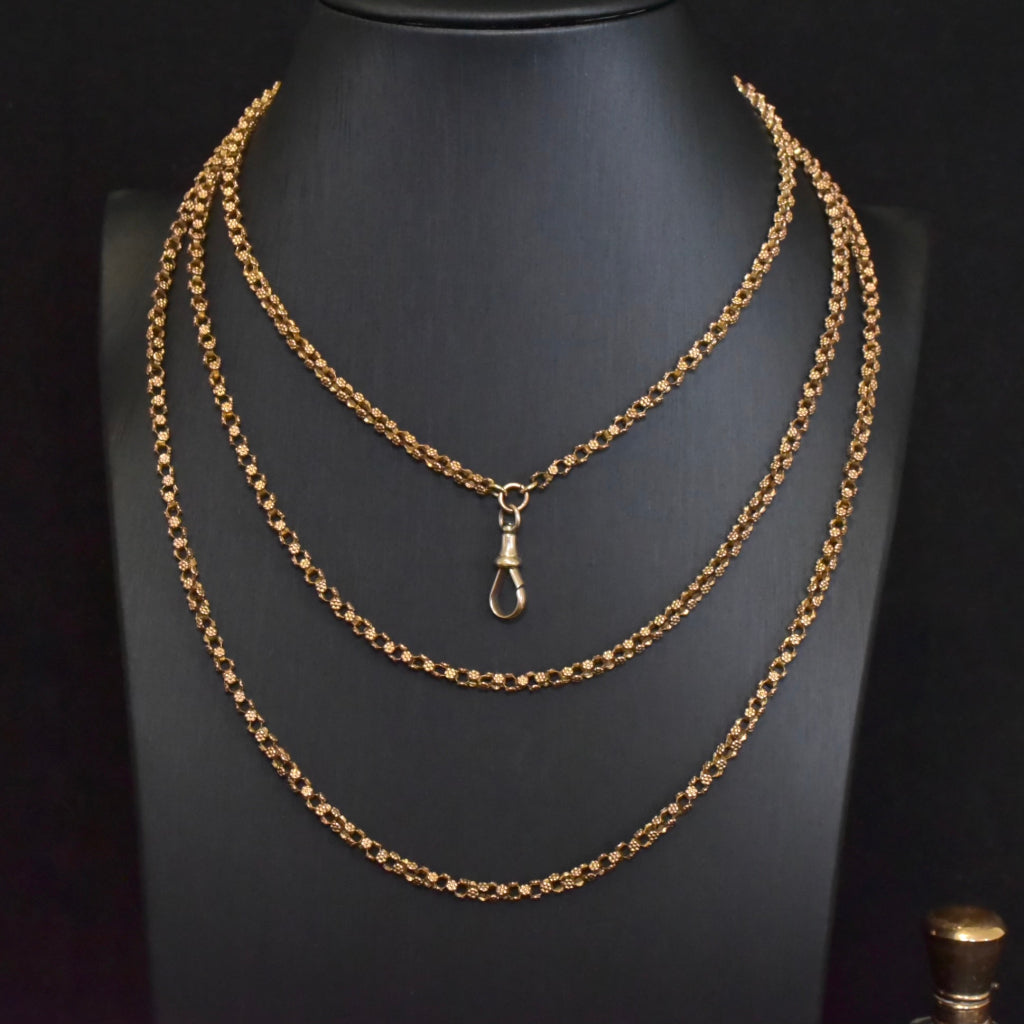

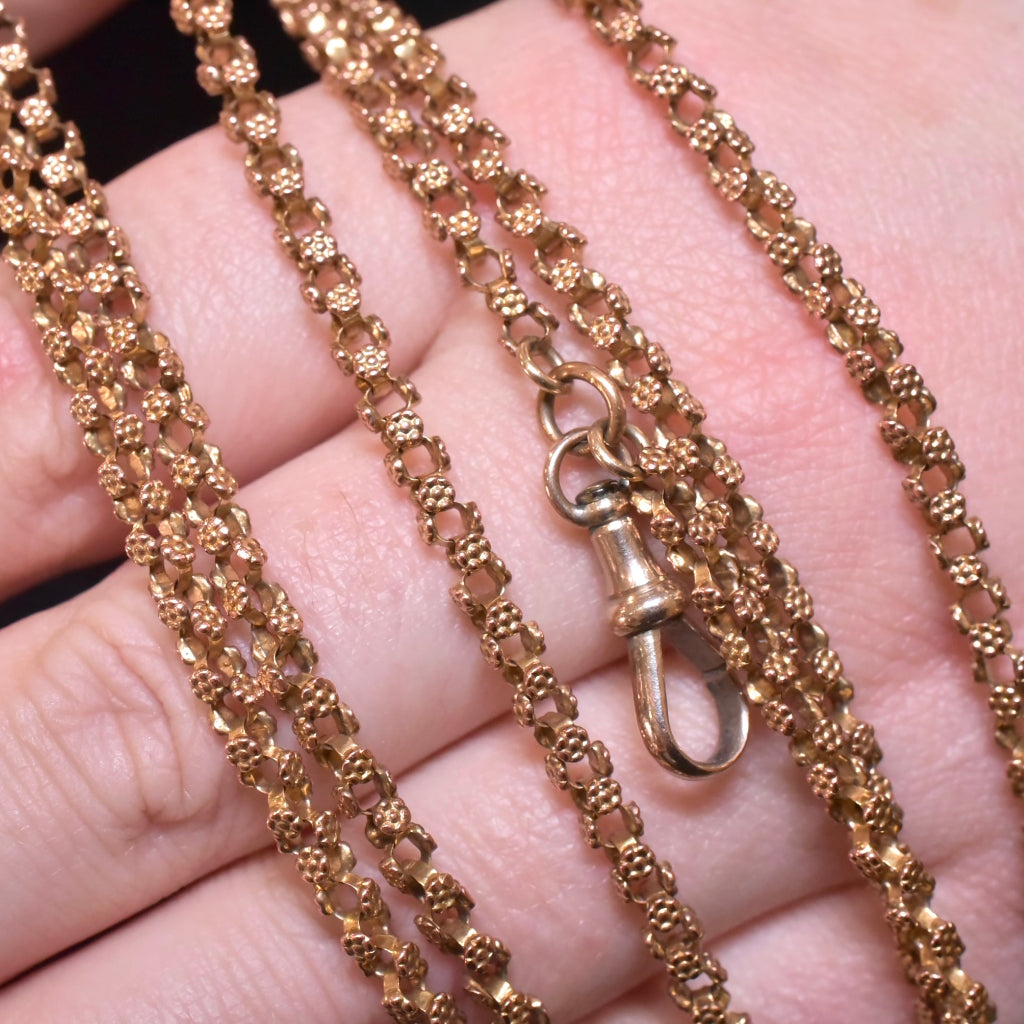
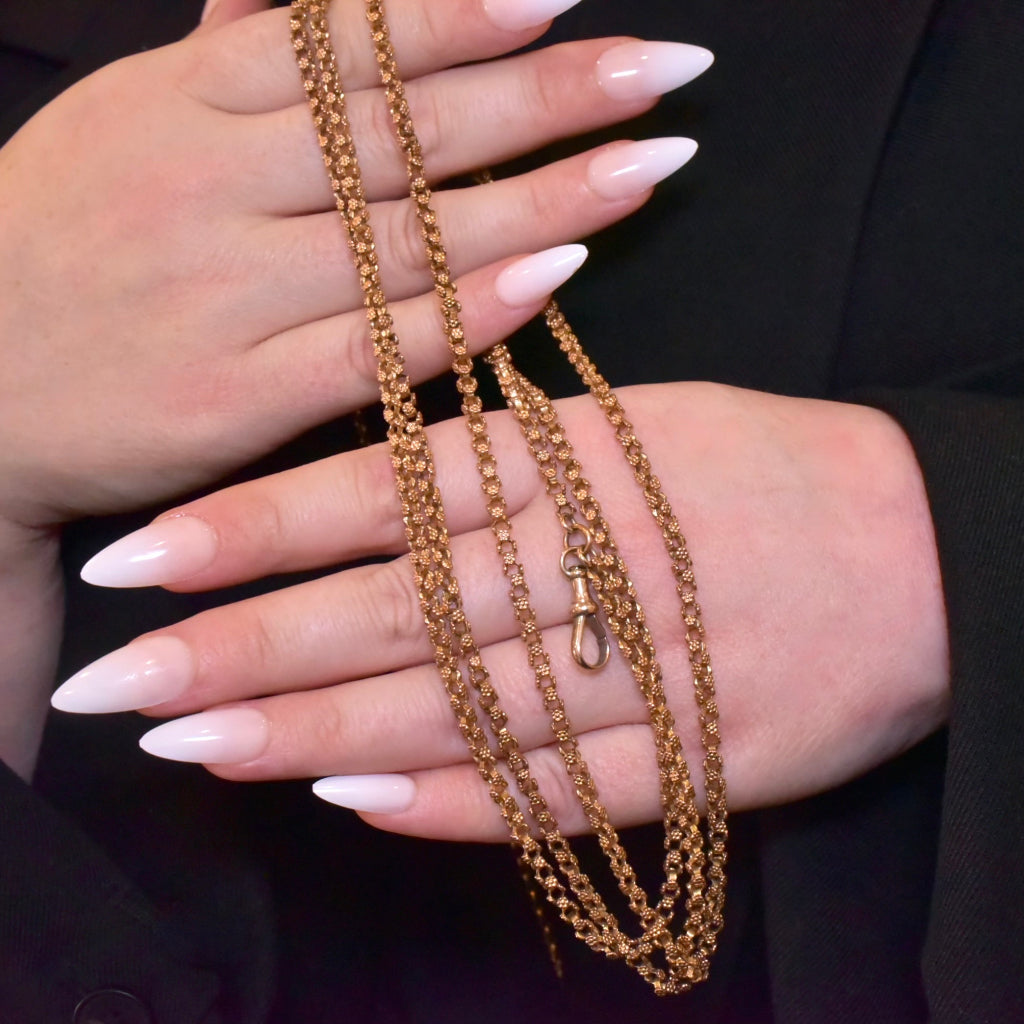
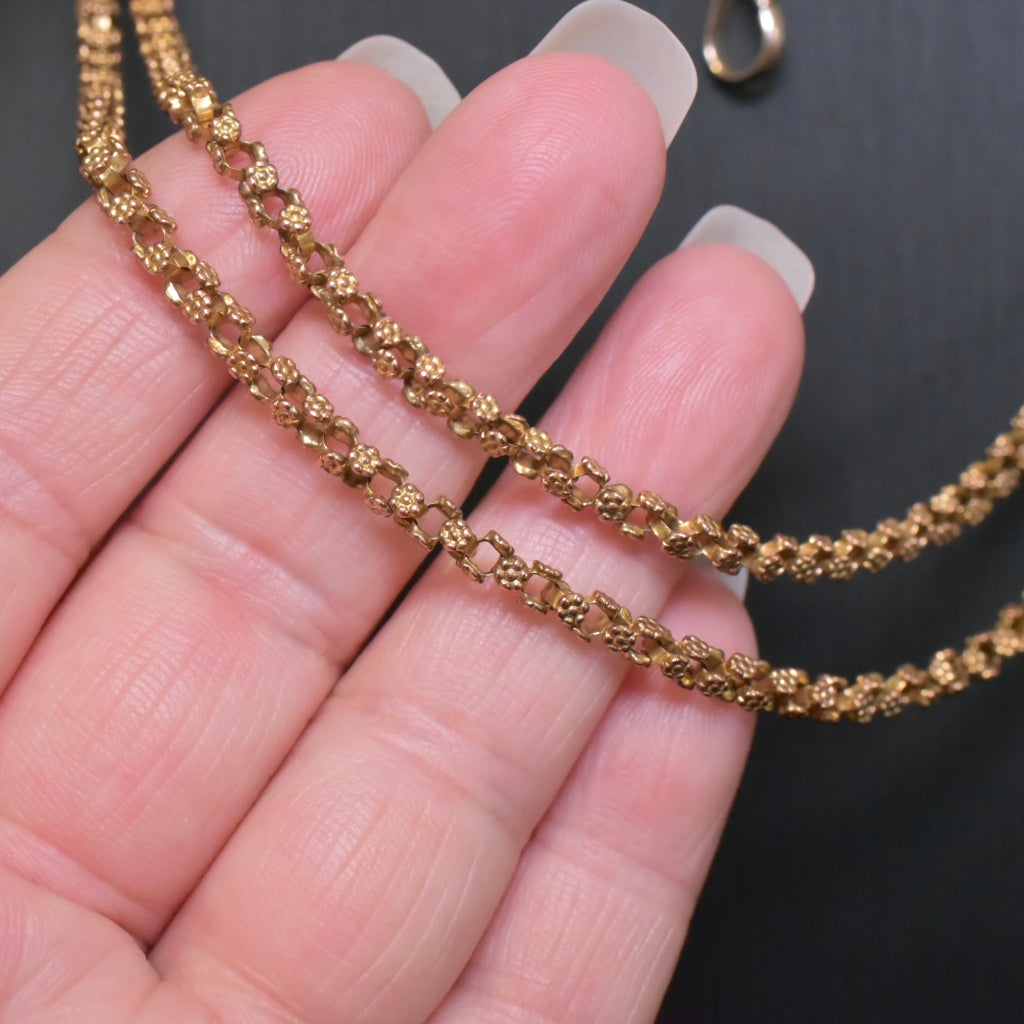
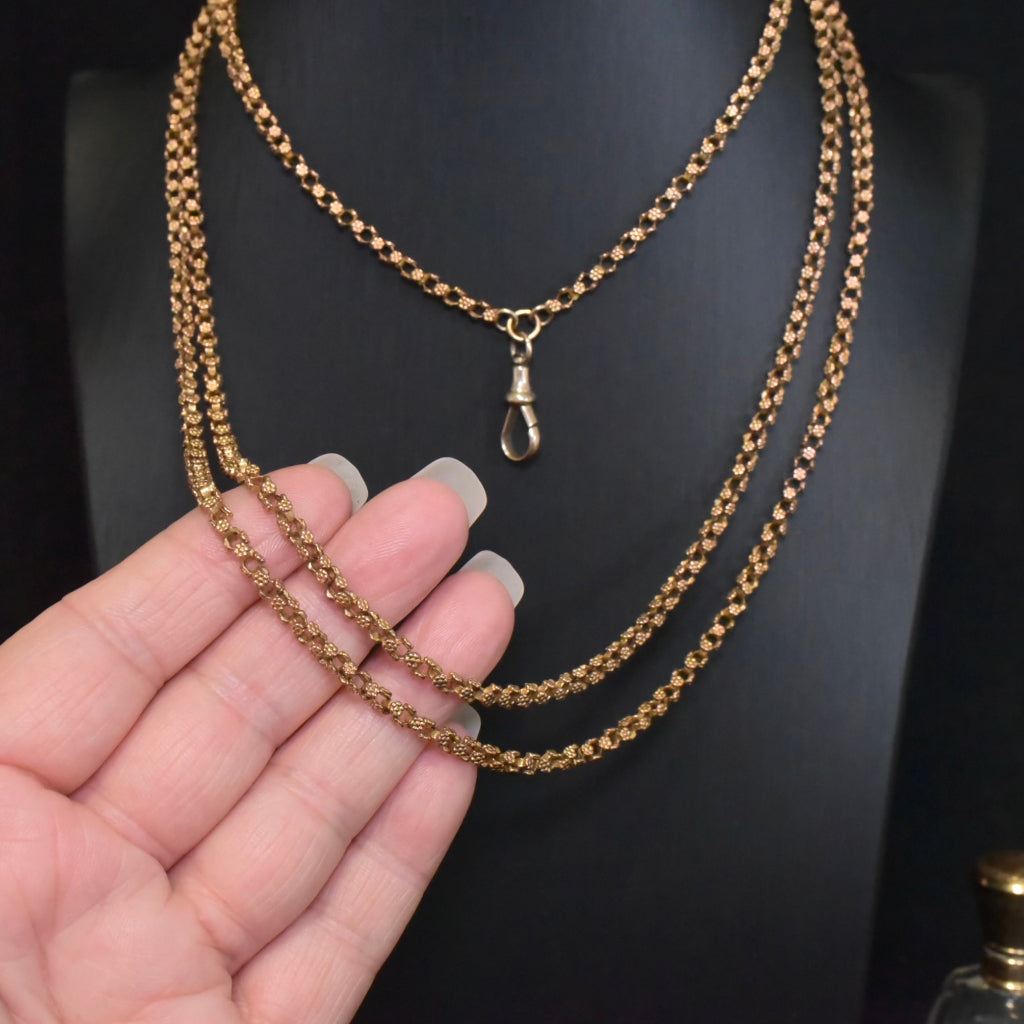
Antique Georgian Pinchbeck Floral Long Guard Chain Circa 1820-30
For all the Georgian jewellery lovers this superb survivor from the early 1800’s is collector’s dream.
English in origin and crafted around 200 years ago, this long chain, or guard chain, is made up of a series of interlocking links featuring two stunning daisy motifs to each.
Crafted from Pinchbeck (see below), and measuring a sublime 130cm which can be worn long or doubled if desired. A later large dog clip has been attached and will support a favourite pendant or locket, or use it to style this chain for a unique look.
A weighty chain at just over 32 grams, delicate and feminine in appearance, but not in strength, this true survivor shows no repairs or weakness throughout.
An asset to any jewellery wardrobe.
STONES
None
ERA
Georgian 1714-1837
MEASUREMENTS
130cm Length
WEIGHT
32.9 Grams
MARKS
None
CONDITION
Very good antique Georgian condition. Chain has no repairs or thinning to be seen between each link. Overall chain exhibits a rosy hue with traces of yellow. Dog clip is probably a later addition, very tight and springs open and closed perfectly.
HISTORY OF PINCHBECK
Pinchbeck is a form of brass an alloy of copper and zinc, mixed in proportions so that it closely resembles gold in appearance. It was invented in the early 18th century by Christopher Pinchbeck, a London clock and watchmaker.
Since gold was affordable only by the upper classes at that time, the development of pinchbeck allowed ordinary people to buy gold 'effect' jewellery on a budget. The inventor allegedly made pinchbeck jewellery clearly labelled as such. The original Pinchbeck was made by Christopher Pinchbeck and his decedents until the 1830s.
The family kept its exact formula a secret, but others guessed the alloy's two components and began to experiment with their own mixes, some more successfully than others.
Others tried to pass off jewellery made from their own formulas as gold, but the Pinchbeck family always made it clear that their metal was a substitute. Over time, the term Pinchbeck was often used generically to refer to all types of gold substitutes.
Pinchbeck fell out of use in the second half of the 19th century being replaced by low carat gold which had been legalised in the in 1854”.
Laybys & Hold Policy
Do you have your eye on a fabulous piece but need some extra time to
pay? At Graisons, we offer suitable layby terms for pieces priced $400 AUD and above. Contact us for more details.
Purchase Guide & Refund Policy
For information regarding our Purchase Guide & Returns Policy, please click here
Shipping & Delivery
Free Complimentary Express Shipping: Australia & Select International Countries.
We are pleased to offer free complimentary express postage, fully insured with tracking and signature on delivery using Australia Post.
Orders are dispatched within one-two business days of purchase. Once complete, a tracking number will be forwarded to you via email notification.
We are currently shipping to the following international countries:
UK, USA, CANADA, SINGAPORE, NEW ZEALAND, HONG KONG.
PLEASE NOTE: Any duties imposed by countries for importing our items are the buyers responsibility. Please contact your local customs agency if you wish to discuss potential rates and fees.
Caring For Antique & Vintage Jewellery
We absolutely pride ourselves on sourcing the best quality pieces for our customers, with many of our items valued by our registered jeweller/gemologist.
Our collection consists of pieces that are of antique and vintage condition, which means that all our items are secondhand and used. Customers are not purchasing 'new', 'perfect' and 'unworn items', and as such, should expect wear and imperfection. Any condition issues are always extensively mentioned in the condition summary.
Please do not hesitate to ask questions prior to purchase. It is the responsibility of the purchaser to ensure that these descriptions and pictures are carefully viewed and any questions are asked prior to the transaction taking place.
Please refer to our guide, Caring For Antique & Vintage Jewellery for more details.
Your Purchase: What Is Included?
Your purchase will be lovingly packaged in our custom made, eco-friendly Graisons Fine Jewellery Jewel box tied with ribbon inside our custom made packaging/mailing box.
For added safety and security, all purchases are shipped inside an Australia Post medium sized mailing box.
If your item includes an independent valuation, the physical certificate will be included.
Choose options





